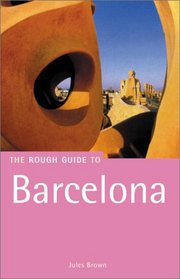Search -
The Rough Guide to Barcelona
The Rough Guide to Barcelona
Author:
INTRODUCTION Barcelona has boomed since the early 1990s, when preparations for the Olympic Games wrenched it into modernity, and today it remains well in the vanguard of other Spanish cities (with the possible exception of Madrid) in terms of prosperity, stability and cultural activity. It's a confident, progressive city, looking towards the re... more »
Author:
INTRODUCTION Barcelona has boomed since the early 1990s, when preparations for the Olympic Games wrenched it into modernity, and today it remains well in the vanguard of other Spanish cities (with the possible exception of Madrid) in terms of prosperity, stability and cultural activity. It's a confident, progressive city, looking towards the re... more »
ISBN-13: 9781858287164
ISBN-10: 1858287162
Publication Date: 2/4/2002
Pages: 288
Edition: 5th
Rating: 1
ISBN-10: 1858287162
Publication Date: 2/4/2002
Pages: 288
Edition: 5th
Rating: 1
5 stars, based on 1 rating
Genres:
- Travel >> Europe >> General
- Travel >> Europe >> Spain >> General
- Travel >> Europe >> Spain >> Barcelona
- Travel >> Reference >> Guidebooks
- Travel >> Travel Writing
- Travel >> Guidebook Series >> Rough Guide




